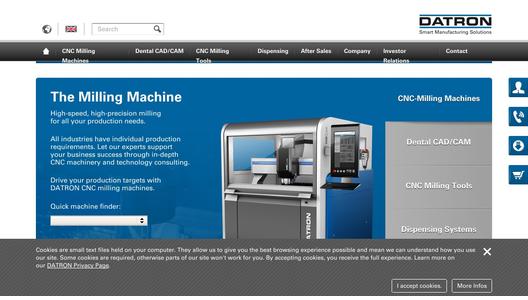Currently many industrial companies focus on an increasingly energy-saving production and the economic use of resources. The fact that DATRON machines, in comparison to many competitors, have a clear advantage due to their lightweight construction and their future-oriented technology, is well-known. However, not everyone can actually relate to the term energy efficiency or calculate the exact consumption of a milling machine. Based on the calculation example of a DATRON M7 with a 1.8 kW spindle, the low energy consumption can be illustrated and is understandable for everyone.
The milling strategy and the spindle power are taken into account to calculate the consumption of a DATRON M7 milling machine with a 1.8 kW spindle. With a moderate machining load, the energy consumption is 1.35 kW/h. The minimum consumption is defined by the movement of the motors and the active cooling unit when the spindle is working. The spindle power has to be added to this. It is determined by the rated spindle power and the degree of difficulty of the machining process. With an average machining process, a 1.8 kW spindle is mostly used, therefore 30% of the rated spindle power is added. Accessories such as vacuum pumps and suction are not taken into account.
Calculation example:
Machining 1.35 kW + 1.8 kW * 0.3 = 1.89 kW * 8 hours per day = 15.12 kWh per day
Electricity price assumption per kilowatt hour: € 0.29/kW
15.12 kWh * € 0.29/kWh = € 4.38
With the result of € 4.38 for 8 hours of daily operation, the
DATRON milling machine M7 1.8 kW proves to be a particularly cost-effective production solution, also highlighting the sustainable strategic approach of DATRON AG in the development of energy-efficient HSC milling machines from an environmental perspective.
Experience the smart DATRON manufacturing solutions at the AMB 2016 in Hall 7, booth A52. The DATRON experts are looking forward to introduce you to the innovative DATRON milling machines.


